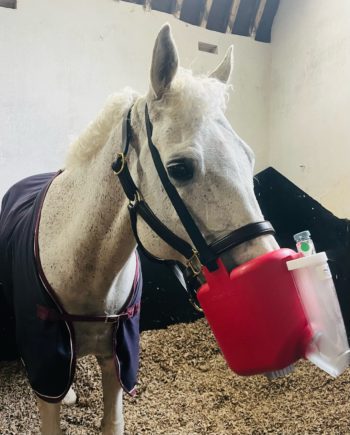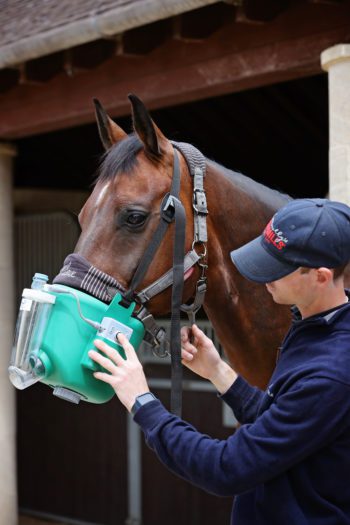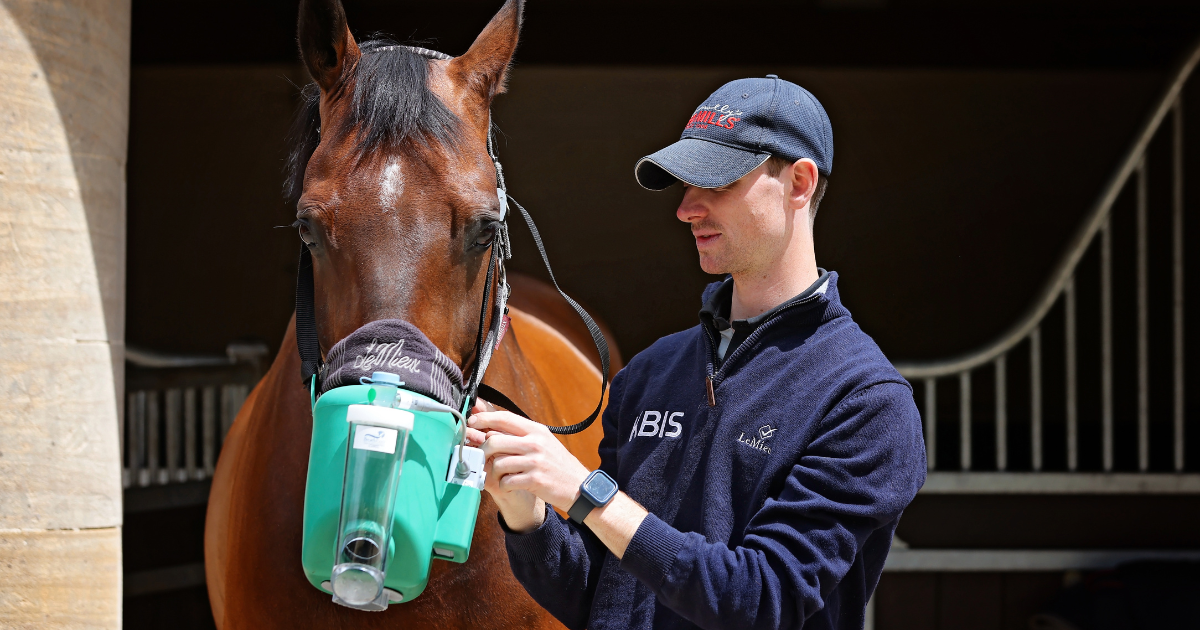Nebulisation is an effective method of delivering prescribed medication directly to the lungs and lower airways, particularly in equine practice where it plays an important role in the management of equine asthma.
With 14% of UK horses affected by a severe form of the disease1, and even more exhibiting milder signs, nebulisation has become an essential component of respiratory care in horses. Nebulisers, such as the Flexineb®, may also be used for routine airway maintenance therapy, helping to minimise the impact of respiratory issues on performance.
Riding high: Harry Meade’s Flexineb® story
Harry Meade, a leading British event rider currently ranked fifth in the world, explains that nebulisation is integral to the management of several of the horses on his yard, but none more so than Away Cruising, his experienced five-star campaigner.
The Irish-bred gelding was diagnosed with equine asthma eight years ago. However, with the help of a targeted management plan, Away Cruising has continued to compete at the highest level.

Harry says, “Respiratory diseases like equine asthma not only have a negative impact on a horse’s general wellbeing but also impact their athletic performance, in particular their anaerobic work. Performance across country is particularly likely to be affected, as well as the quality of their fitness work in training.”

“After Away Cruising was diagnosed with chronic low-grade equine asthma, we worked with our vet to put a management plan into place and nebulisation formed a key part of this. We’ve used a nebuliser in the run-up to and throughout each of his five-star events ever since and he’s successfully competed for eight seasons on this regime.
“We’ve achieved great results together and this wouldn’t have been possible if his equine asthma wasn’t well controlled. The Flexineb® remains a really important part of his preparation for events.”
Benefits of nebulisation
Nebulisation enables delivery of medications direct to the lungs and lower airways, reducing the side effects that may be associated with systemic administration. For example, corticosteroids are one of the most effective drug therapies for managing equine asthma due to their potent anti-inflammatory action2,3. While systemic corticosteroids are effective, especially during acute flare-ups, they can cause significant side effects, including adrenal suppression and immunosuppression4.
Delivery of medication by nebulisation allows long-term use where required, with reduced incidence of side effects. A 2017 study that investigated the use of nebulised dexamethasone sulphate demonstrated that there was minimal systemic bioavailability of the nebulised medication and no hypothalamic-pituitary-adrenal (HPA) axis suppression in healthy horses5.
About the Flexineb®
The Flexineb® E3 delivers aerosolised medication and natural therapies to the airways of horses.
● Rapid, effective nebulisation
● Targeted delivery to the lungs and small airways
● Lightweight and portable
● Silent in use
● Battery or mains operated
● Up to 6 hours use from a single charge
● Available in foal, standard and large sizes
Airway maintenance

Nebulisers can also be used for non-drug therapies, such as vaporising saline to reduce mucus and airway congestion. This can be particularly beneficial for competition horses including racehorses and eventers, where maintaining respiratory health is crucial for optimal performance but FEI regulations and drug withdrawal times need to be considered.
Inhaled non-drug therapies can also be helpful in the ongoing management of respiratory disease in pleasure or non-competition horses once their initial clinical signs have been controlled.
Expanding the use of nebulisation to small animals
While nebulisation is well-established in equine care, it is also becoming increasingly recognised for its benefits in treating respiratory conditions in companion animals. The Cambridge BOAS Research Group highlights the utility of nebulisation in managing various airway disorders, including post-surgical care for dogs with brachycephalic obstructive airway syndrome (BOAS). They highlight the benefits of saline nebulisation, but also the use of prescribed medication to reduce airway swelling.
Companion animal nebulisers, such as the Flexineb® C2, can also be used in the management of conditions including feline asthma and allergic rhinitis in cats, as well as canine chronic bronchitis and laryngeal paralysis in dogs.
A study in dogs demonstrated that nebulisation achieved a significantly higher deposition of radiolabelled fluticasone in the lungs than metered dose inhalers so may be a more effective means of delivering inhaled medication in some patients.6
For more information on the Flexineb® or the Flexineb® C2 and the management of respiratory disease in cats, dogs and horses, visit www.breatheazy.co.uk or email enquiries@breatheazy.co.uk
